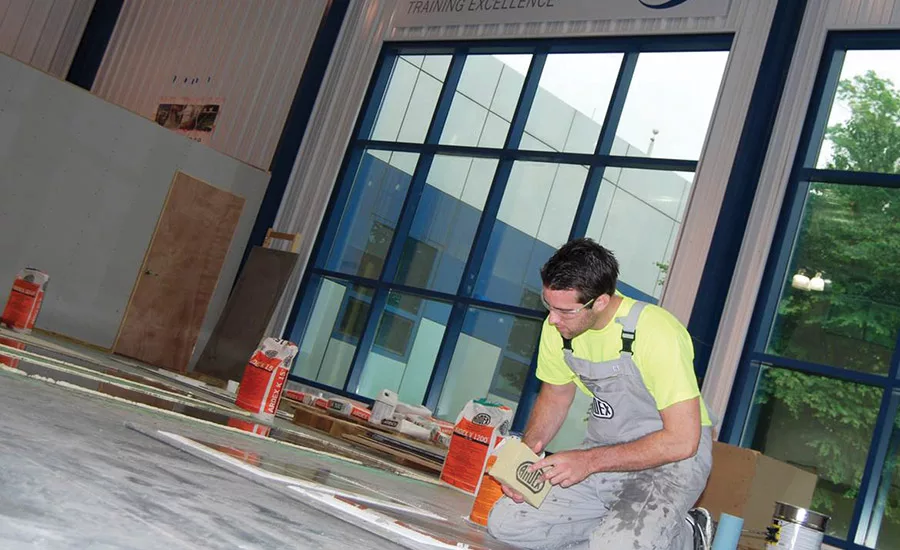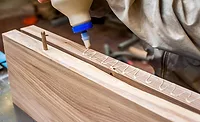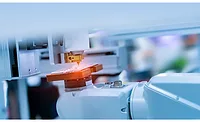Strategic Solutions
Minding the Gap Between Adhesives and Sealants Manufacturers and End Users
Transferring laboratory development into a real-world environment

The adhesives and sealants industry has a continuing need to close the gap between formulators in the R&D laboratory and end users in the manufacturing and applications environment. Surprisingly, these disparate groups may be worlds apart in terms of day-to-day experiences and expectations regarding product performance. A variety of methods can be used for success in the final stages of the new product development cycle, in situproduct testing (including application procedure optimization) and end-user training as part of commercialization.
In the coatings industry, testing the application process and educating customers in dedicated facilities is commonplace among multi-national companies. Last September, PPG announced the establishment of an applications testing and training facility in Wisconsin, in addition to the expansion of its Allison Park, Pa., applications laboratory, while The Sherwin-Williams Co. has had three separate technology centers in operation for several years. The objective of these captive facilities is to test, optimize processes, validate quality and train the sales force. Importantly, these are also places where the companies can engage with customers in a setting that replicates an environment similar to what is found on the manufacturing floor without the inconveniences of borrowing production time at their customers’ expense.
Hands-On Testing
The concept of testing within a replicate manufacturing environment is not as common for the adhesives and sealants industry, for a variety of reasons. For instance, the high level of confidentiality in the handheld device and display market makes gaining access to the production line more challenging, according to Daniel Hanscom, global market application engineer at Henkel Corp. Often, parts are not made available for hands-on testing in advance of production. In these cases, companies like Henkel must rely on their history of formulary success to recommend suitable products and best manufacturing practices. Alternatively, Henkel’s customers can elect to purchase a complete solution that includes the adhesives, dispensing and curing equipment, and robots that can be programmed to ensure application success in the production line.
In the medical device industry, the adhesives supplier and parts manufacturer achieve a higher level of collaboration due to biocompatibility needs and inherent liability concerns. Device manufacturers and adhesive formulators work together to specify products and conduct parallel testing, including accelerated aging to determine the long-term reliability of the recommended systems. These markets may welcome a non-captive, third-party facility that could assist with optimizing application procedures and validating performance.
Once a product has been proven under laboratory conditions, companies may conduct trials with beta customers to get rapid feedback on products before they are launched to the broader market. According to Dave Woodcock, Huntsman Corp.’s advanced materials market manager for structural adhesives, these trials provide real-world, production-line verification of recommended processes and solicit first-hand responses from the customer.
Another way to close the gap between the formulator and the end user is to conduct thorough product knowledge training sessions, often in a dedicated training facility. This type of training can be an important differentiator that builds loyalty and can reduce potential product claims due to misuse or non-standard application methods. For high-performance and differentiated applications such as aerospace, Huntsman conducts extensive hands-on, multi-day training sessions where distributors “roll up their sleeves and apply actual product.”
“A picture may be worth a thousand words, but if you smell, roll out and work with the adhesive, it is worth a million words,” Woodcock said.
In field applications, intensive training is critical because the installer becomes the standard-bearer and ad hoc representative of the brand. That is why ARDEX uses its technical department as the bridge between the formulators in the laboratory and the applicator or floor covering installer. According to Seth Pevarnik, director of technical service at ARDEX America, when the R&D laboratory develops a new product, they provide samples to the technical department to be applied and evaluated to make sure it performs to the customers’ expectations.
To ensure that ARDEX truly understands the mindset and drivers of their customer, the company hires ex-installers as technical service consultants and technical field representatives. These industry veterans are responsible for the product training sessions conducted daily in the company’s six training facilities across the U.S. and Canada. The two-part sessions are split equally between classroom presentations and physical demonstrations where installers can learn proper application techniques by working with the products themselves.
Adhesives formulators that may not have internal access to a dedicated applications and training facility also have options. Application equipment manufacturers such as Graco, Nordson and PVA allow companies to use their equipment and facilities for training purposes. Given the demand and benefits of a robust process optimization and commercialization program, we foresee the emergence of independent organizations to provide these services to the market in a non-captive arena.
For more information, phone (513) 469-7555 or visit www.chemquest.com.
Any views or opinions expressed in this column are those of the author and do not represent those of ASI, its staff, Editorial Advisory Board or BNP Media.
Looking for a reprint of this article?
From high-res PDFs to custom plaques, order your copy today!






